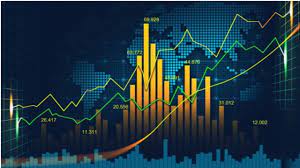Volatility in the Forex market
Volatility refers to the calculated forex market tendency of rising or falling dramatically over a particular time period. Typically, standard deviations are used to measure volatility in the forex market. This implies that the deviation of price from its expected point is referred to as its mean.
Seasoned traders are aware that the market can turn volatile at any given point in any part of markets that are connected with one another. Smooth trending markets or range-bound markets could also bear the brunt of piercing market shocks and sudden volatility.
When we learn to manage our greed and fear, the next step is to be able to capitalize on changing price action. There are multiple ways through which one can establish whether the markets are volatile. You would also find a number of strategies that can be used to safeguard your capital or to earn a profit from a rapid increase or decrease in volatility. The long-term players would always be armed with a set of rules and strategies to use if the price movements seem unpredictable.
Identifying currency volatility
Currency volatility can be hard to identify and track given how unpredictable it can be. However, volatility can be measured through a number of methods that helps traders predict the outcomes.
For the sake of accuracy, two different kinds of volatility have to be taken into account – historical volatility and implied volatility. Historical volatility is the one that has taken place already while implied volatility measures traders’ expectations for the future on the basis of the price of futures options.
Historical volatility can be seen in charts, where the spikes and troughs in prices are visible. For implied volatility, the market’s expectations are measured in conjunction with currency volatility.
Realised/Historical Volatility
This refers to the ultimate movement in prices that happens over a defined historical period. Technical analysis indicators such as the Average True Range (ATR) and Bollinger Bands can turn out to be handy for defining volatility. The ATR reveals a movement in assets on an average in a certain time frame. A falling ATR is a sign of narrow price ranges, which implies that volatility is decreasing. A rising ATR on the other hand shows that volatility is rising.
Bollinger Bands show an increase and decrease in volatility. Their core function is to provide dynamic support and resistance levels and send out alerts if overbought or oversold conditions begin to surface. The bands become wider with increasing volatility and narrow down as volatility falls.
Implied Volatility
To be able to assess the specific price fluctuations in a certain market more closely, it is important to look at implied and realized volatility. The former is an indicator of the current market pricing calculated on the basis of its expectation for movement over a particular time period. With the help of this forward-looking figure, a trader should be able to calculate the market’s volatility in the future.
What does a volatile market look like?
When volatility in the market is high, the price ranges in the market are wide, the trade volume is high, and more trading happens in a single direction. To illustrate this with an example, only some would place buy orders when the market is underperforming while only a few would place sell orders when the market is going up. That said, it is also possible that the traders are less willing to hold positions once it strikes them that prices can change rapidly to an extent that winners could turn into losers.
If you dive a little deeper into market volatility, it suggests that there are more chances of the market falling during volatile periods whereas, in rising markets, volatility is low.
Introducing the VIX (Volatility Index)
The VIX calculates the market’s expectation of 30-day forward-looking volatility in the S&P 500 index. Prices in options are used to do this calculation where a higher VIX reading indicates higher stock market volatility whereas low readings imply less volatile periods.
To put it simply— if there’s an increase in the VIX, the S&P 500 falls, hinting that the time is right to purchase.
A reading under 12 is considered low, whereas anything more than 20 is considered elevated. In 2008, intraday trading reached an all-time high of 89.5. It helps to draw a parallel between the present VIX levels to the ones expected to identify if the VIX is “high” or “low”. It can also be crucial to get clearer indications of the market’s prediction of the future realized volatility.
You will come across several other similar indices in bond and currency markets that are handy for measuring volatility.
Volatility vs risk
Volatility and risk have some distinct features. Its beyond any trader’s control, while the risk is a ball that is well within our court. Identify how much risk you can take and how much money you can afford to lose.
The interesting bit here is that the equation between the two is strong. Trading volatile currencies are a risky business because the prices could move in any direction at any time. In case the swing is large, both profit and loss can rise significantly.
A common pattern in forex trading involves herd mentality. Traders tend to follow the suit of their peers and end up taking the same action. If the market falls, they would end up selling their trades at a lower price, incurring big losses. In a volatile market, it becomes even more important to know what the risks involved are and also assess the advantages as well as the disadvantages. Use your own good sense and don’t let a popular opinion sway your judgment. Have a personal risk management strategy and stick to it.
Riding volatility
Here are some forex volatility trading strategies and tips that you may find helpful. These would turn out to be helpful in earning more from your trades while also mitigating the risks. Needless to mention, volatile markets could be risky and thus, you should have a good trading strategy in place and try not to deviate from it.
- Trade using charts and indicators
- Trade around news and events
- Use stop losses
- Have a low position size
- Adhere to your forex trading strategy
- Maintain a trading journal



